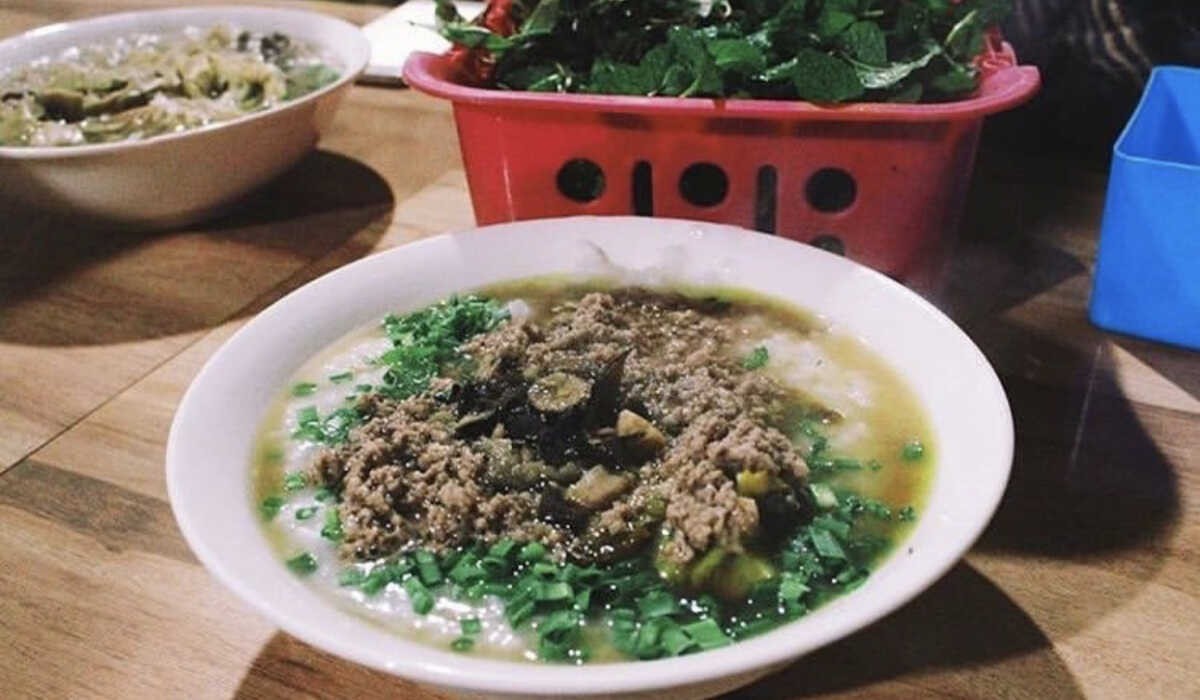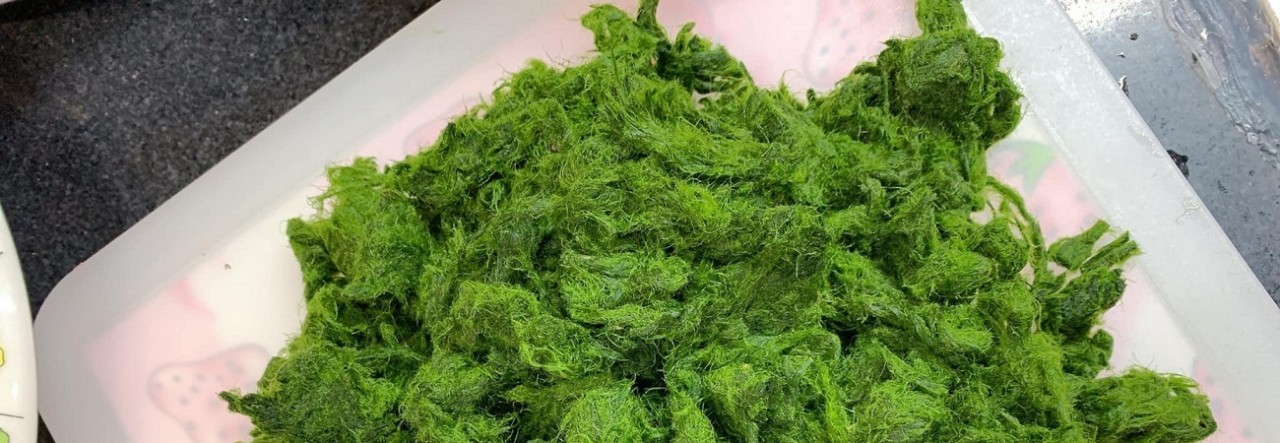In the later months of the year, the northern mountainous province of Ha Giang attracts flocks of tourists who come to watch blooming fields of buckwheat and beautiful golden paddy fields.
Ha Giang is not only famous for being a travel destination all over Vietnam with its wilderness and beautiful natural scenery, but also for the mouth-watering, unique traditional foods that you have never tried before.
Aconite root congee (Chao Au Tau)
 |
| Photo: VOVTV |
This congee is cooked from rice and aconite roots. The roots are soaked overnight in water that has been used to wash rice before being simmered together with rice and pork trotters until the roots get soft.
Locals also add chili, pepper, herbs, and chicken eggs to the congee.
This dish is especially loved by elderly people to keep them strong and healthy, and it also works like a natural herb medicine to improve fatigue, help with sleep and relieve tiredness after a long, hard–working day.
The first time one tastes the porridge it may be a little bitter. But gradually they will be seduced by the sweet taste and fragrance of the congee.
Roasted moss
 |
| Photo: MIA |
“Really? They eat moss?” That’s the most common reaction of many people the first time they hear about this dish.
Green moss turns out to be a delicacy of the Tay ethnic people in Ha Giang. They get moss from streams and mountains and wash it carefully until the greasy substances are washed away.
They add some spices to the moss before roasting it.
This dish tastes unusual but delicious nevertheless. It is said to be very good for health, improving blood circulation, detoxifying, and reducing fevers.
Thang Den
 |
| Photo: VOVTV |
From the outside look, Thang Den looks like Banh Troi – a famous food in Hanoi but has a smaller size, which is just about the size of the tips of your fingers. Thang Den is made from glutinous rice flour, creating many colors of green, red and yellow from natural ingredients such as sticky leaves, gac, turmeric, etc. Depending on guests’ requests, the owners can add more or change the fillings.
Sour noodles (Pho Chua)
 |
| Photo: Hoang Viet Travel |
Sour noodle soup is actually a dish originating from China but is also quite popular in Ha Giang. Ha Giang people often make this dish to eat in the summer, at parties, or as breakfast at the fair.
The main ingredient of this dish is noodle soup. The noodle must be fresh, smoothly coated, and not dry. There is also fried pork (char siu), roasted duck, sautéed peanuts, homemade sausages, and a number of side dishes including herbs, fresh garlic, papaya, or grated cucumber.
The broth is the soul of the Pho Chua dish, which is made from a very sour vinegar, mixed with sugar and tapioca flour, then stirred and seasoned before being boiled on the stove.
 |
| Photo: Dien may XANH |
When the customer orders, the seller spreads the pho noodles evenly on the plate, arranges slices of pork, and fried sausage on the side, adds a few pieces of golden roasted duck meat, and then sprinkles basil on top, with peanut butter. Lastly, the broth is poured into the bowl, creating a strange and attractive taste.
Steamed rice rolls on Dong Van ancient street
Although it looks like a plain roll cake, which is made from thin steamed rice flour, Banh Cuon Dong Van (Ha Giang steamed rice rolls) has its own characteristics, in which Dong Van old town rolls are considered to be the most delicious and loved among people living here.
 |
| Photo: Bao Thanh Nien |
The white cake is smooth, thin, soft, and fragrant with rice. Diners can eat regular Banh Cuon (with wood ear filling and minced meat) or chicken egg rolls.
Especially, the dipping sauce of this cake is made from simmered bone broth instead of using sweet and sour fish sauce like in other places. People put hot dipping sauce in a bowl, then add pork patties (or meatballs), scallions, and finely chopped Chinese flavor.
Hue Rice Vermicelli Soup
Hue rice vermicelli soup is a popular dish both in the north and the south of Vietnam. The dish has a typical sweet taste of mam ruoc (a special shrimp paste in the south), the aroma of lemongrass and the peppery flavour of stewed dried chilli. Rice vermicelli threads used for the dish must be white, soft and big.








